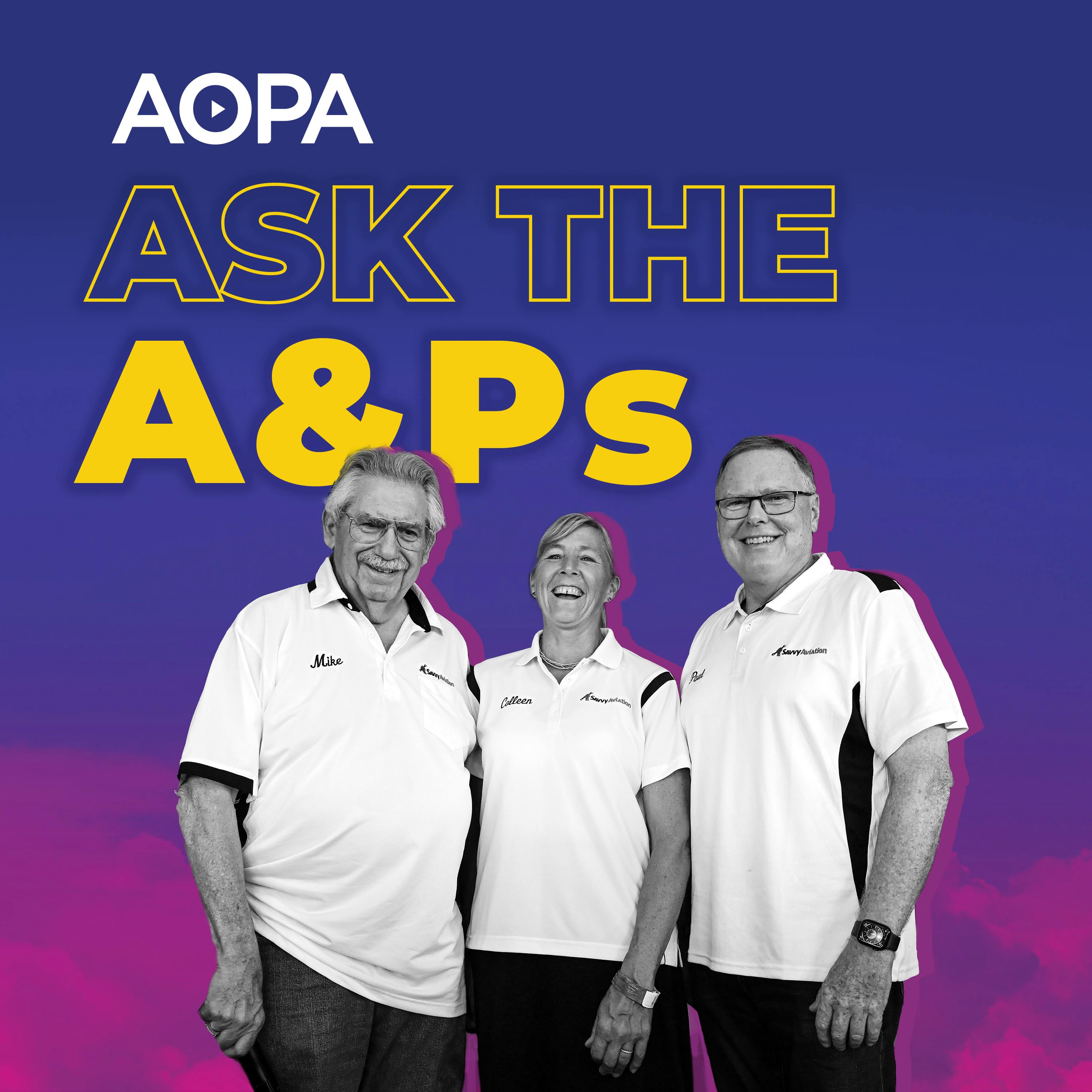I'm a choir boy in the church of lean of peak
Description
Because it's impossible to make it through an episode without discussing leaning, Mike, Paul, and Colleen hit it from two sides this month. A debate about inoperative equipment, and why mechanics reach for the pressurization cart first. Submit your questions to [email protected] for a chance to get on the show.
Full notes below:
Jay flies a Lycoming IO-540 on an experimental with one cylinder that peaks long before the others. He’s tried everything, including switching injectors. Mike suggests checking the valve lift to make sure the action is as good as the other cylinders. Paul suggests an in-flight manifold leak test to show things that can’t be duplicated on the ground. It works like this: Climb to 5,000 or 6,000 feet where the full power setting is the same as ambient pressure, stay at full rich on the mixture and let the EGTs stabilize. Then lower the manifold pressure by 7 or 8 inches and watch what happens to the EGTs. If one goes up while the others go down, or vice versa, it shows a leak in the induction system.
Gary is a CFI who wonders about strain on a constant-speed propeller during power-off landing practice. With the engine at idle the hosts think it’s fine to pull the propeller back during gliding. Since his first question was so quick, Mike, Paul, and Colleen decided to give him another, and here Gary wonders if leaning to peak EGT is acceptable to the engine. We know leaning to 50 degrees rich is detrimental to engines, and we know lean of peak is safe if done properly, but little is said about running at peak. Given his comfortable CHTs, Mike said running at peak EGT is totally fine. And Paul said he ran at peak EGT for years in his Piper Twin Comanche with no issues.
Eric wonders what triggers an overhaul and asks what happens once you go past TBO. Close condition monitoring is essential, says Mike. The two biggest tools are an oil filter inspection for the bottom end, and borescope for the top end. Oil analysis is also helpful, but Mike said the filter inspection is more important. Paul suggests making sure owners speak to their mechanic first to ensure they’ll sign off the airplane if the engine is past TBO. Although there doesn’t appear to be any legal basis to do so, some mechanics refuse to sign off an annual if the engine is past TBO.
Scott wondered about inoperative equipment and how to decide if it’s ok to fly. Mike points to FAR 91.213D. Because it’s in Part 91 it applies to everyone, regardless of aircraft. It includes a logic flow that details how to deal with inoperative equipment. In order to fly with inop equipment it must not have been required for aircraft certification, in Part 91.205, on the aircraft’s mandatory equipment list, or be a hazard to fly without it.
Toby has a Cessna 414 and has struggled with pressurization over the years, and he asks if his troubleshooting flow works well. He’s a little frustrated because most mechanics first hook up the pressurization cart, even though in his experience the test usually doesn’t show much. Mike said the cart is used to test the outflow side of the pressurization system because it bypasses the inflow system. Twin Cessnas have a very convoluted inflow side, where tons of things can go wrong. One reason to go straight to the cart is because troubleshooting the inflow side requires digging, Paul said. Troubleshooting mindset also matters. A slow-evolving problem is different than a sudden issue, for example.
More Episodes
Published 11/15/24
Lean of peak is causing odd vibrations in a Commander, and the hosts discuss proper troubleshooting. Plus carb heat on the ground, dehydrators, and parts no longer manufactured. Email [email protected] for a chance to get on the show.
Full notes below.
Chip said his mechanic is concerned about...
Published 11/01/24
Rough idle, electronic ignition basics, airplanes to avoid (or not), and the difference between detonation and pre-ignition are on tap for this episode. Email us at [email protected] for a chance to get on the show.
Join the world's largest aviation community at aopa.org/join
Full notes...
Published 10/15/24


